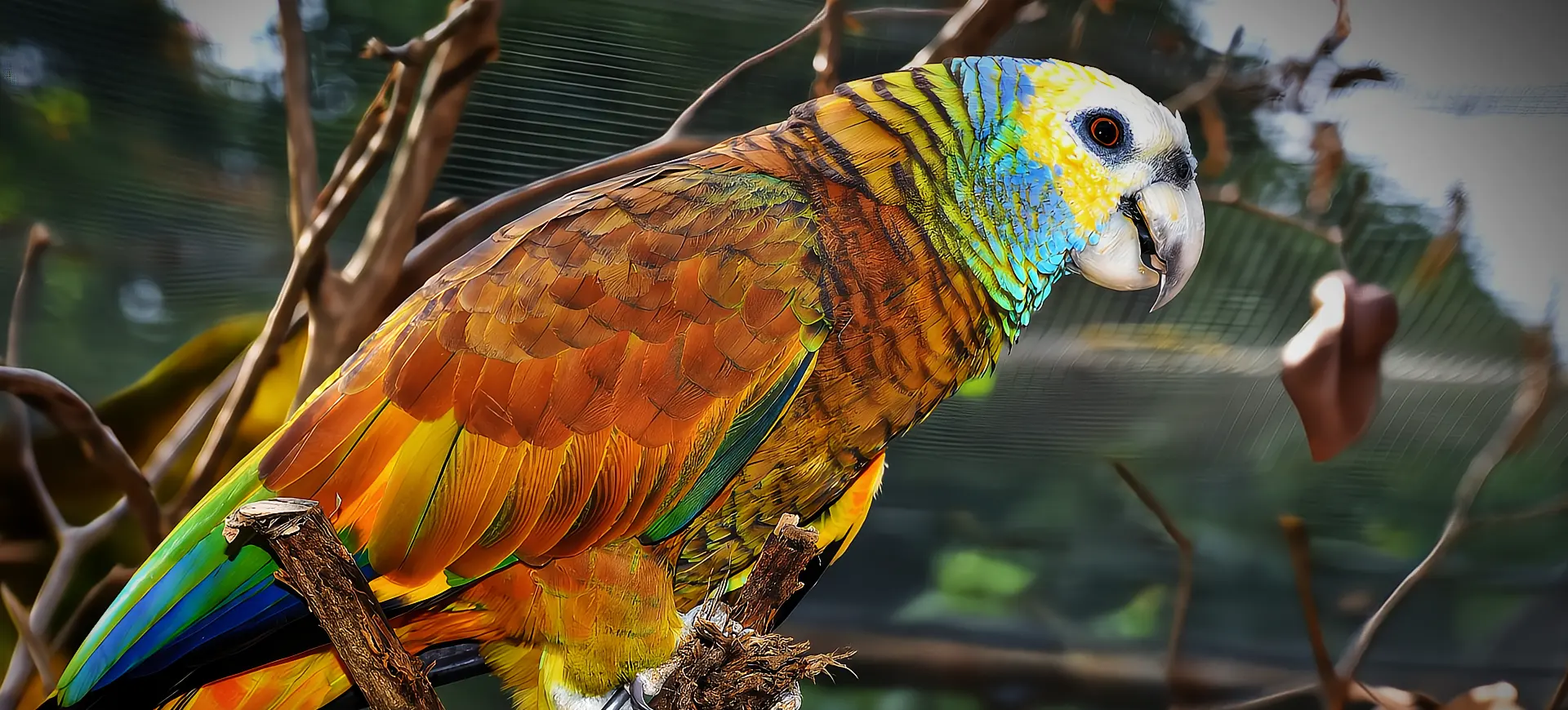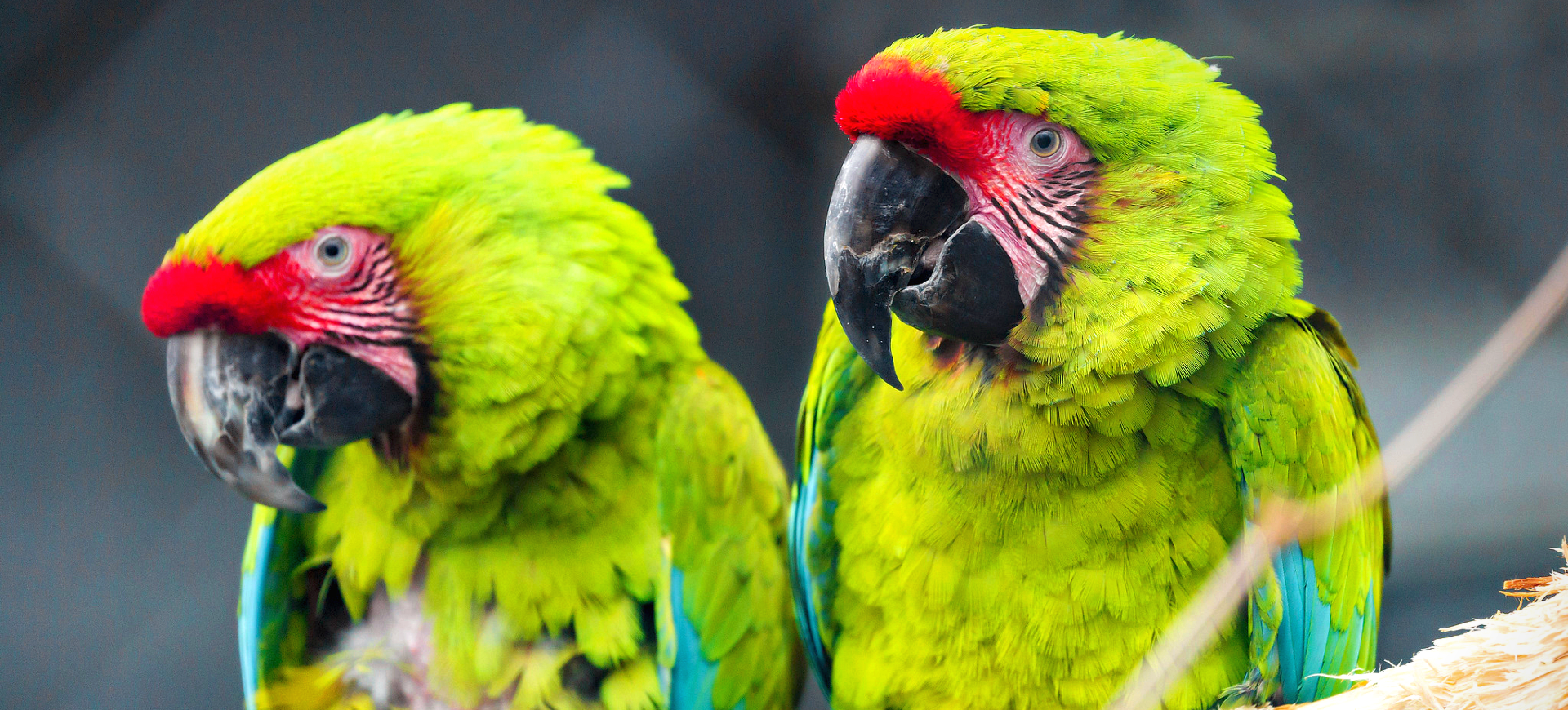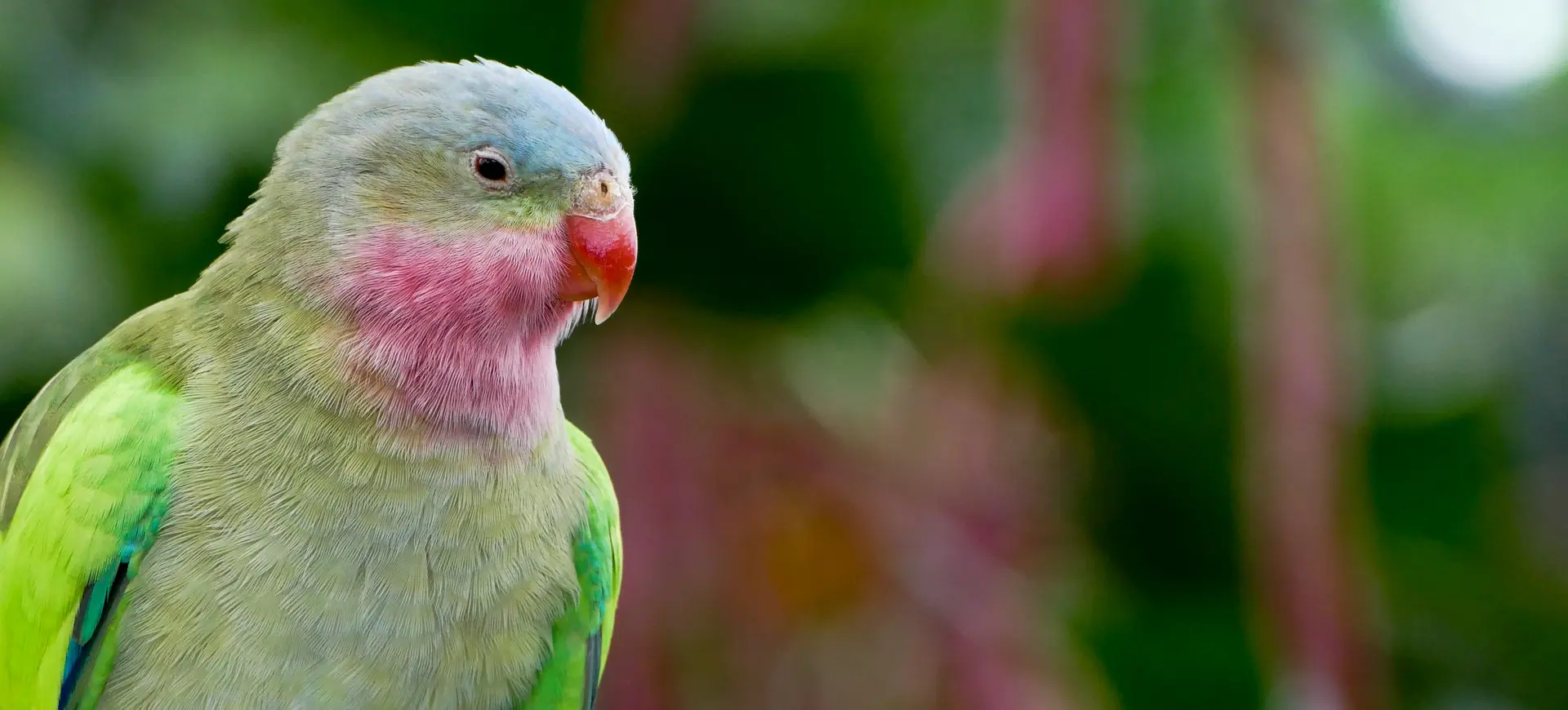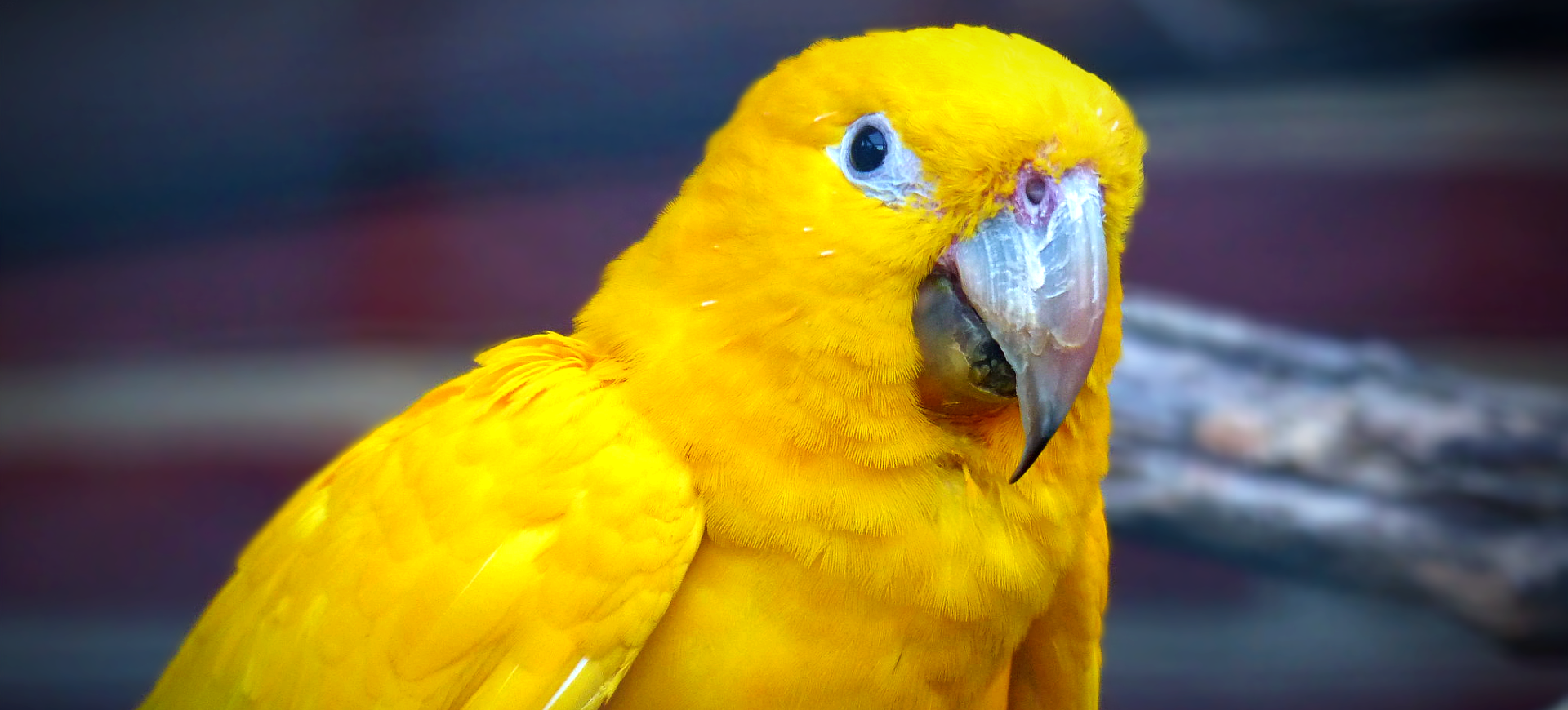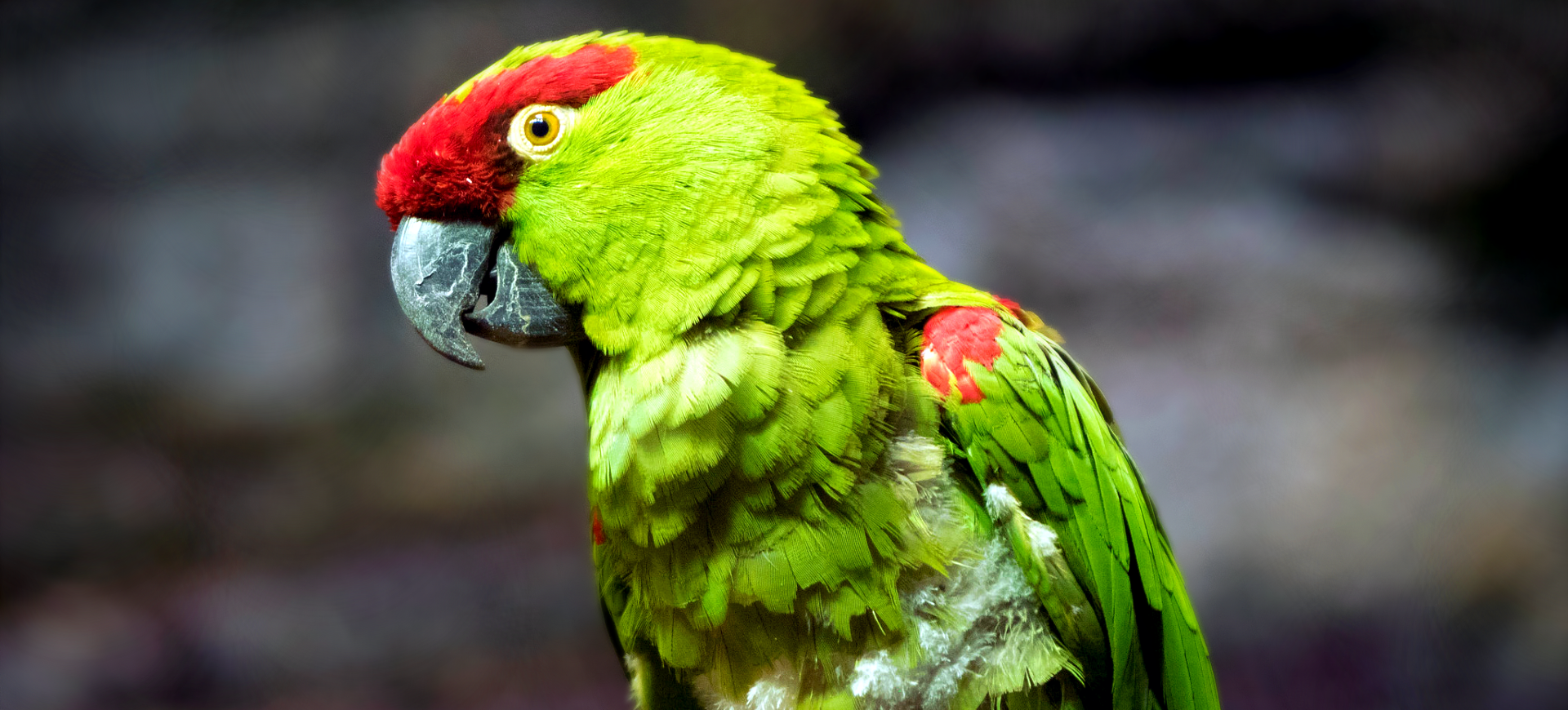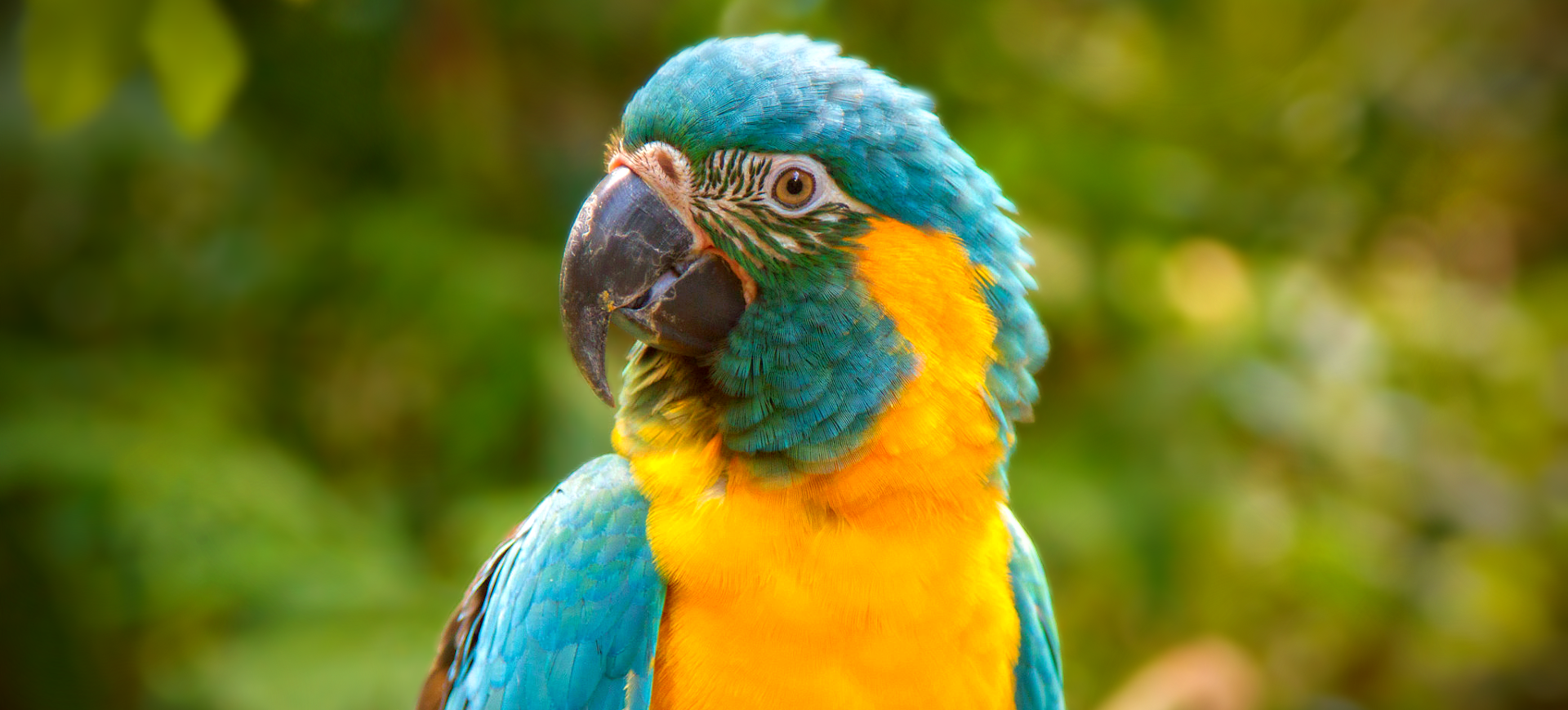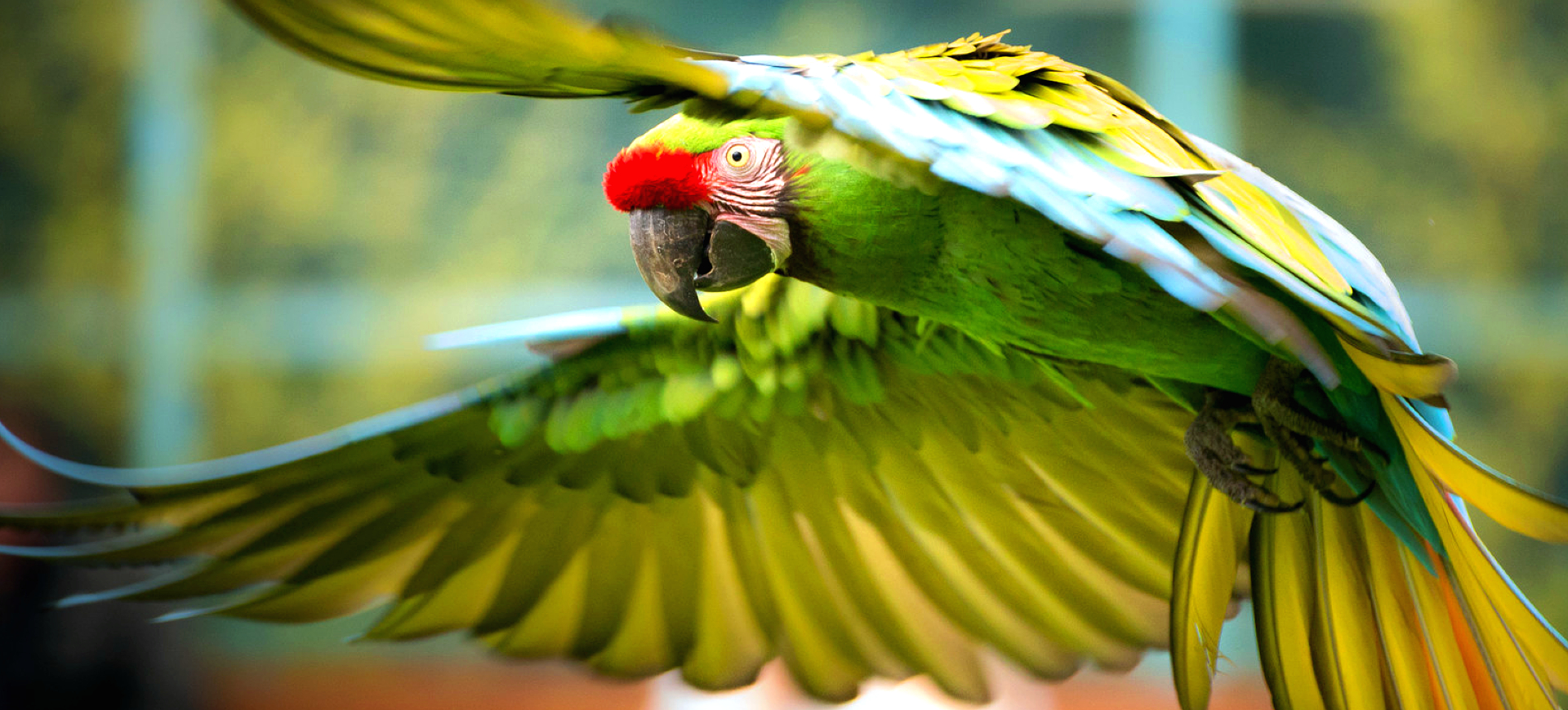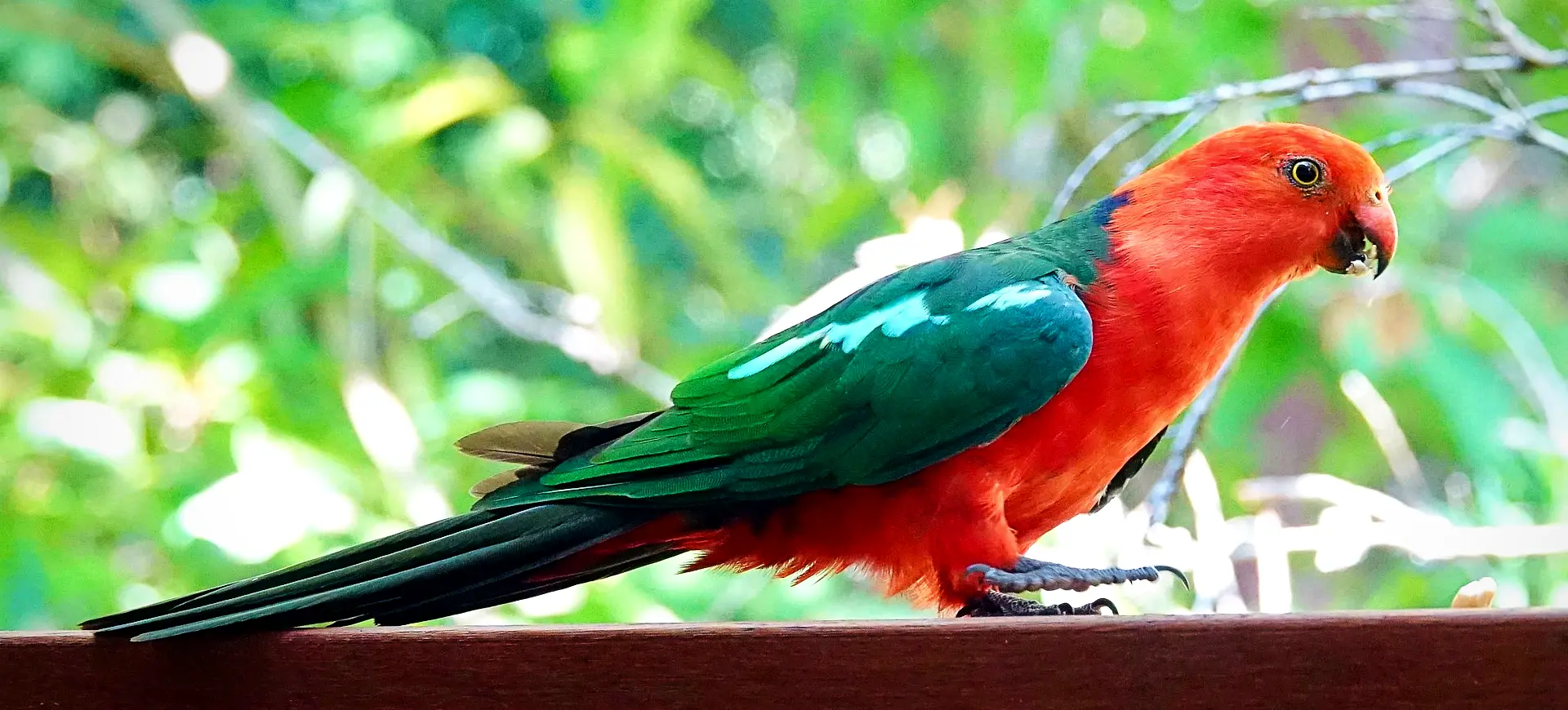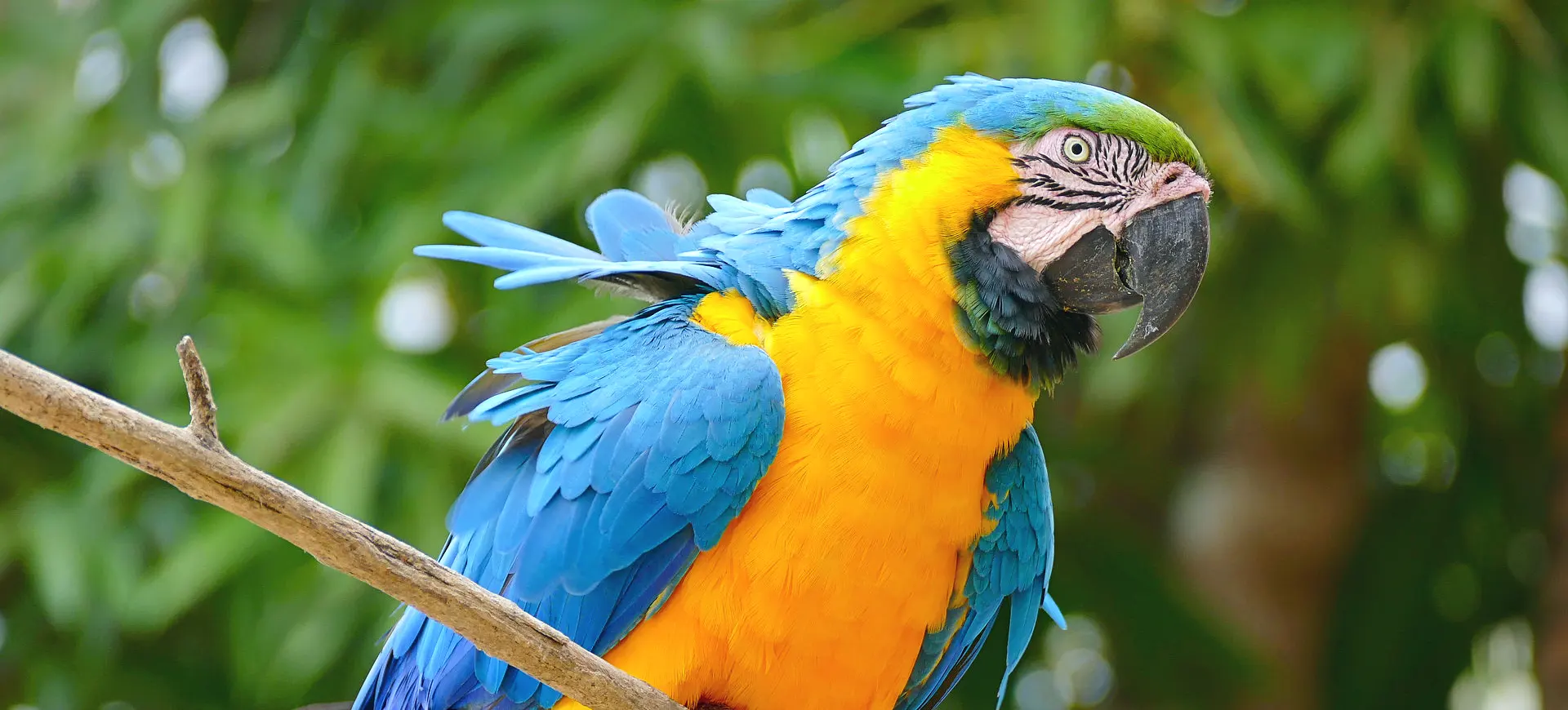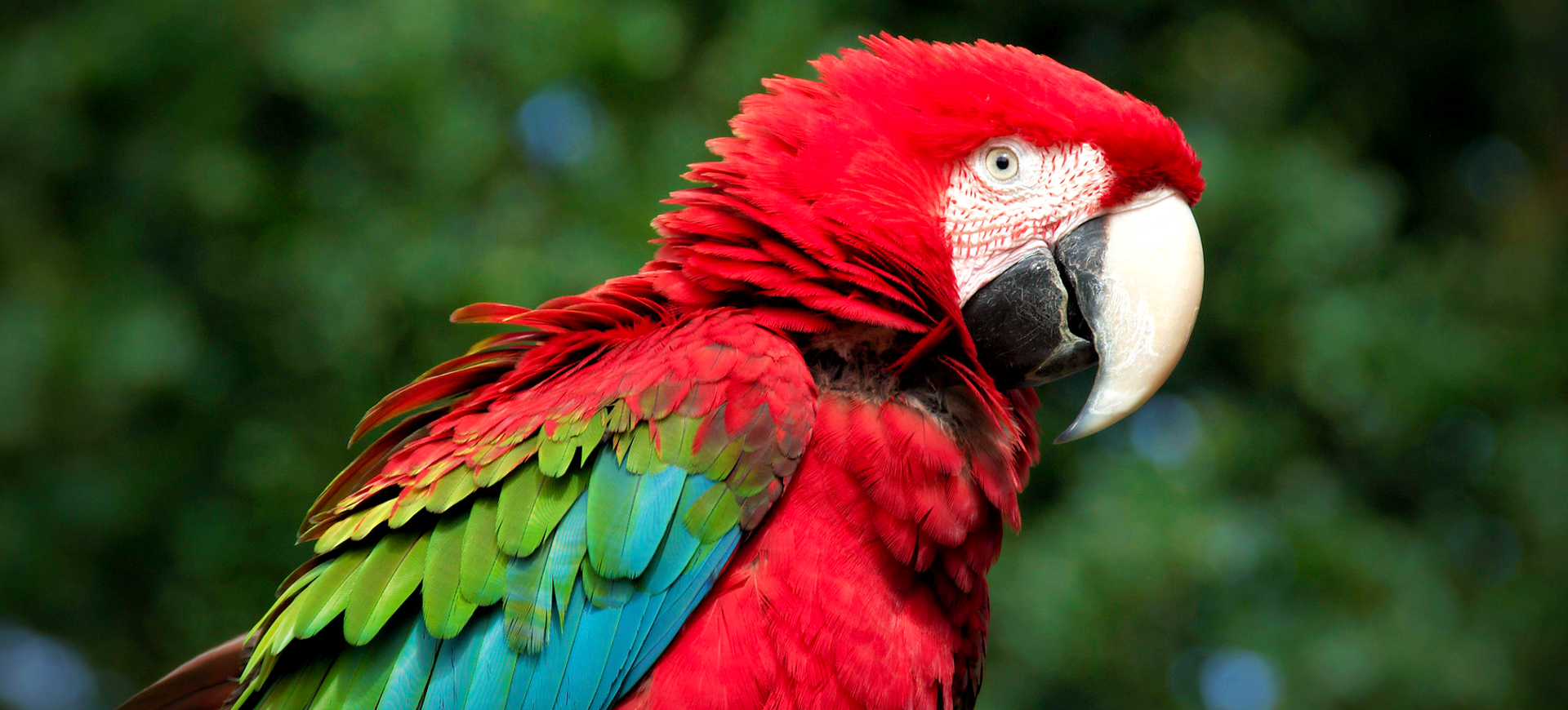Overview
The Hyacinth Macaw (Anodorhynchus hyacinthinus) is the largest macaw and the largest flying parrot species in the world, notable for its striking cobalt blue plumage and bright yellow rings around its eyes and at the base of its beak. Native to central and eastern South America, it symbolizes the Pantanal region, thriving in open areas and palm swamps. This bird has a powerful black beak capable of breaking hard nuts and seeds, which is critical as nuts from the palm trees constitute a significant part of its diet. The Hyacinth Macaw is admired for its stunning appearance, friendly nature, and intelligence, often displaying playful behavior and the ability to mimic human speech.
The species is known for its strong pair bonds, with mates often seen flying closely together in the wild. They communicate with loud, deep-throated growls or “raucous” calls, which can be heard over long distances. These birds are cavity nesters, preferring to nest in holes in trees or cliff faces. Due to their specialized habitat requirements and diet, they are predominantly found in areas with abundant palm trees.
Despite their beauty and charisma, Hyacinth Macaws face several threats in the wild, including habitat loss and illegal pet trade. Their natural habitats are being reduced due to deforestation for agriculture and cattle ranching. Moreover, their striking appearance makes them a target for poachers, who capture them for sale in the exotic pet market. These threats have significantly reduced their populations, making conservation efforts crucial for survival.
Taxonomy
Kingdom
Phylum
Class
Order
Family
Genus
Species
Type
Physical Description:
The Hyacinth Macaw is renowned for its vibrant blue feathers covering most of its body, except for the striking yellow circling its eyes and the lower part of its beak. It has a robust and curved black beak, which is among the most powerful of any bird, allowing it to crack even the hardest of nuts with ease. The large black beak contrasts starkly with the bright yellow markings, creating a visually striking appearance. Its long tail and broad wings are also covered in the same vivid blue feathers, making it a truly magnificent sight during flight.
An adult Hyacinth Macaw can grow up to 40 inches long, and its wingspan can reach an impressive 4 feet or more. Despite its large size, it is surprisingly agile and capable of swift and acrobatic flight. The birds exhibit slight sexual dimorphism, with males generally larger than females. Their captivating eyes are dark brown, which adds to their expressive and intelligent demeanor.

Lifespan: Wild: ~50 Years || Captivity: ~60 Years

Weight: Male: 2.6-3.7 lbs (1.2-1.7 kg) || Female: 2.6-3.7 lbs (1.2-1.7 kg)

Length: Male & Female: 30-40 in (76-102 cm)

Height: Male & Female: 30-40 in (76-102 cm)

Wingspan: Male & Female: 40-48 in (100-120 cm)

Top Speed: 35 mph (56 km/h)
Characteristic:
Native Habitat:
Hyacinth Macaws are native to the open terrains of northern and central South America, primarily found in Brazil but also parts of Bolivia and Paraguay. They inhabit various habitats, from the palm savannas and grasslands to the lightly wooded areas, particularly favoring regions abundant in palm trees. They require large, old trees with suitable cavities for nesting, often returning to the same nesting sites year after year.
These macaws are adapted to a life closely intertwined with the flora of their habitats, particularly palm trees, which provide them with both food and nesting sites. The seasonal flooding and drying of their habitats affect their movement patterns and feeding behaviors, with birds often traveling significant distances in search of food and suitable nesting sites.
Climate Zones:
Biogeographical Realms:
Continents:
Diet:
Diet & Feeding Habits:
The Hyacinth Macaw has a specialized diet, primarily feeding on nuts from native palms, such as acuri and bocaiuva. Its strong beak is perfectly adapted to crack open these hard-shelled nuts, which few other animals can manage. They also consume various other seeds, fruits, nectar, and, occasionally, small insects. The birds often visit clay licks, which are exposed areas of clay, to consume soil, which helps neutralize the toxins in their diet and provides essential minerals.
These macaws feed in small groups in the wild, often with their mates. They can be destructive feeders, dropping large amounts of nuts and fruits while eating. However, This feeding behavior plays a critical role in their ecosystem, as the discarded seeds help propagate the trees that sustain them. Hyacinth Macaws are also known to feed in cattle pastures, picking up food from the ground.
Mating Behavior:
Mating Description:
Hyacinth Macaws are monogamous, forming lifelong bonds with their mates. Their courtship rituals include mutual preening, sharing food, and flying together. These strong pair bonds are reinforced year-round, not just during the breeding season. They are known for their loud and raucous calls, which are believed to play a role in strengthening the pair’s bond and communicating over long distances.
Nesting typically occurs in tree cavities or cliff faces, with the preference for large, old trees that can accommodate their size. Females lay a clutch of 1-3 eggs, which are incubated for about a month. The male plays an active role during this period, feeding the female and guarding the nest. The chicks are altricial, meaning they are born blind and featherless and are entirely dependent on their parents for food and protection for several months.
Reproduction Season:
Birth Type:
Pregnancy Duration:
Female Name:
Male Name:
Baby Name:
Social Structure Description:
Hyacinth Macaws exhibit a remarkable social structure, primarily characterized by their strong, lifelong pair bonds. These monogamous birds are often seen in pairs or small family groups, engaging in various bonding behaviors such as mutual preening, food sharing, and synchronized flying. Such activities strengthen their relationships and play a crucial role in their survival, as maintaining close bonds ensures cooperative feeding and effective defense against predators. In regions where their food sources, particularly palm nuts, are plentiful, Hyacinth Macaws may congregate in larger flocks, creating a spectacular display of blue in the sky.
Beyond their interactions, Hyacinth Macaws are also known for their friendly disposition towards humans. Their curious and friendly nature makes them approachable, often willingly interacting with people. Unfortunately, while endearing, this trait makes them more susceptible to capture for the illegal pet trade. Despite this, their generous nature has helped in conservation efforts, as their ability to form bonds with humans has made them excellent ambassadors for their species, engaging public interest and support for their conservation.
Groups:
Conservation Status:
Population Trend:
The current population of Hyacinth Macaws in the wild is precariously low, with estimates suggesting only around 6,500 individuals remain. The bulk of this population is found in Brazil, encompassing much of their natural habitat. Unfortunately, their numbers continue to be threatened by rampant habitat destruction and the illegal pet trade, leading to a steady decline in their population over recent years.
Various conservation initiatives have been implemented in response to the alarming decrease in Hyacinth Macaw numbers. These programs aim to protect and rehabilitate the natural habitats of these birds, focusing on reforestation and the preservation of nesting sites. Additionally, efforts to curb poaching and the illegal trade of these majestic creatures are central to these conservation strategies, seeking to ensure a safer and more stable future for the Hyacinth Macaw.
Population Threats:
The Hyacinth Macaw faces several critical threats that jeopardize its survival, the most significant of which is habitat destruction. Large tracts of their natural habitats are continually being cleared for agricultural activities and cattle ranching, reducing suitable living spaces for these birds. The situation is exacerbated by the selective harvesting of palm trees, which are vital for the macaw’s diet, consisting mainly of nuts but also as preferred nesting sites.
Compounding these environmental threats is the illegal pet trade, which targets the Hyacinth Macaw due to its striking blue plumage and engaging personality. Their allure makes them a prized possession in the illegal pet market, leading to many birds being captured and removed from their natural habitat. This, along with the loss of their food sources and nesting areas, creates a multifaceted crisis, severely impacting the population and distribution of this magnificent species.
Conservation Efforts:
A multifaceted approach to conservation has been adopted to combat the declining numbers of the Hyacinth Macaw. Legal protections have been established to safeguard these birds from poaching and habitat destruction, with laws and regulations enacted in the countries where they reside. In addition, numerous non-profit organizations are actively involved in habitat preservation efforts, focusing on reforesting areas with palm trees that are crucial for the macaws’ diet and nesting. These combined efforts aim to create and maintain a sustainable environment for the Hyacinth Macaws.
Furthermore, educational programs have become a cornerstone of conservation strategies, aiming to inform the public about the Hyacinth Macaw’s plight and how to help. By raising awareness, these programs seek to reduce illegal trade and encourage local and global communities to participate in conservation efforts. Alongside these educational initiatives, captive breeding and reintroduction programs have been established to increase the population of Hyacinth Macaws in the wild, providing a hopeful avenue for augmenting their numbers and ensuring the species’ survival.
Additional Resources:
Fun Facts
- Hyacinth Macaws have the strongest beak of any bird, capable of exerting a force of 200 pounds per square inch, enough to break a coconut.
- Despite their powerful beaks, they are known for being gentle and affectionate birds, particularly when hand-reared.
- They are sometimes called “gentle giants” due to their large size and friendly nature.
- The blue coloration of their feathers is not due to pigment but is structural, caused by the reflection and scattering of light.
- Hyacinth Macaws play a crucial role in their ecosystem as seed dispersers, helping maintain the health and diversity of their habitats.
- They have a relatively long lifespan, living up to 50 years in the wild and even longer in captivity.
- Conservation programs for Hyacinth Macaws have been notably successful in some areas, with populations stabilizing or increasing due to dedicated efforts.
- They have been featured in various films and media, often characterized by their striking appearance and charismatic behavior.
- Hyacinth Macaws can fly at speeds of up to 35 miles per hour.
- They are one of the few animals that use tools, often using sticks to help position nuts for cracking with their beaks.








